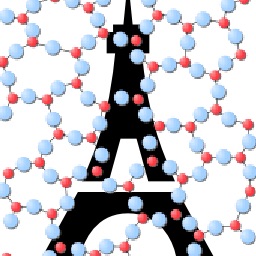Atomic picture of structural relaxation in silicate glasses
As nonequilibrium materials, glasses continually relax toward the supercooled liquid state. However, the atomic-scale origin and mechanism of glass relaxation remain unclear. Here, based on molecular dynamics simulations of sodium silicate glasses quenched with varying cooling rates, we show that structural relaxation occurs through the transformation of small silicate rings into larger ones. We demonstrate that this mechanism is driven by the fact that small rings (<6-membered) are topologically overconstrained and experience some internal stress. At the atomic level, such stress manifests itself by a competition between radial and angular constraints, wherein the weaker bond-bending constraints yield to the stronger bond-stretching ones. These results strongly echo von Neumann’s N À 6 rule in grain growth theory and suggest that the stability of both atomic rings and two-dimensional crystal grains is fully topological in nature.
